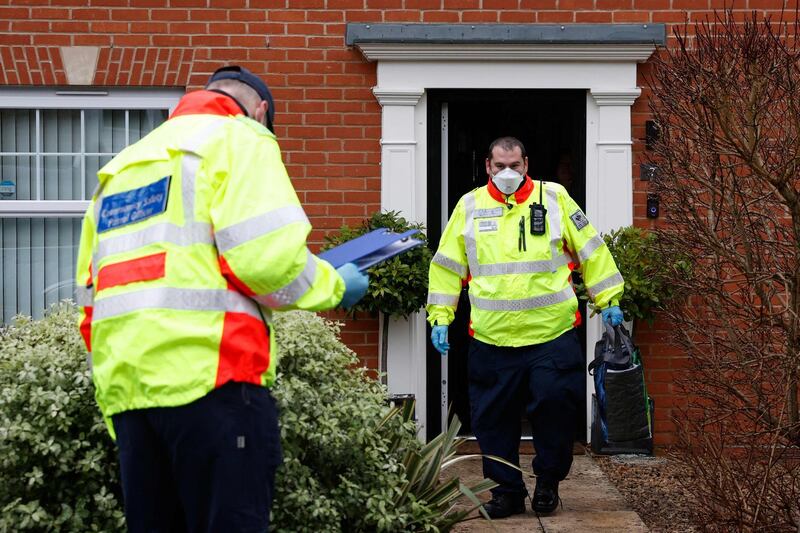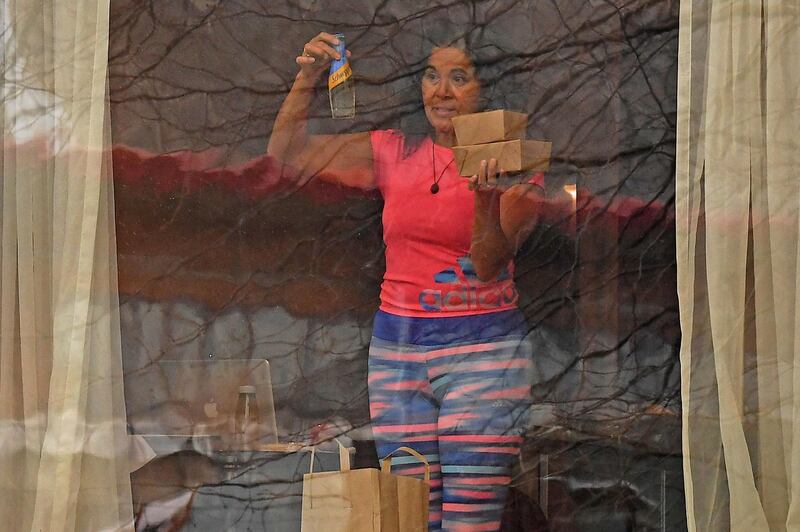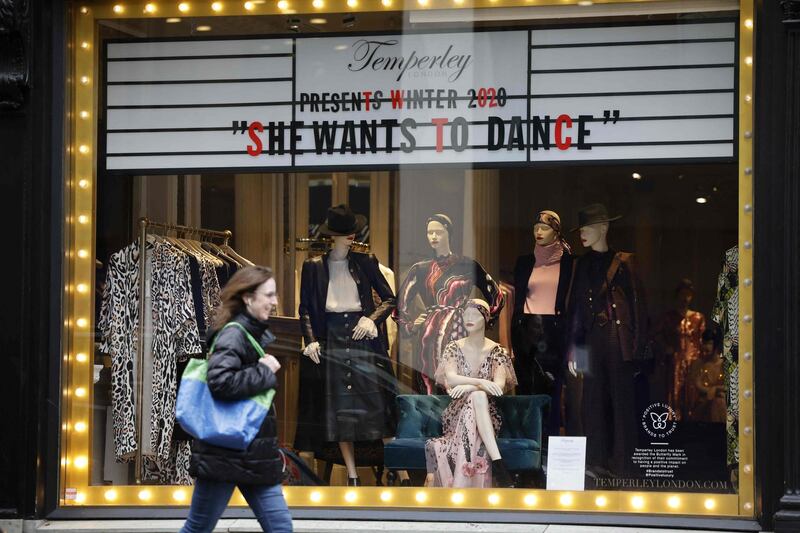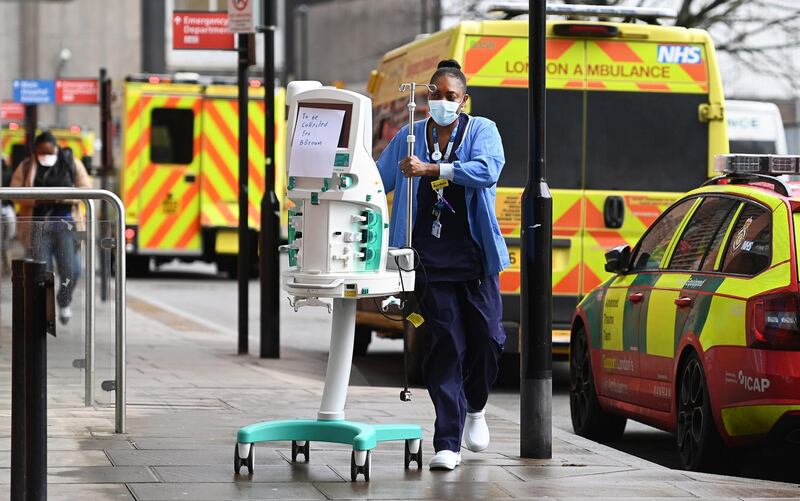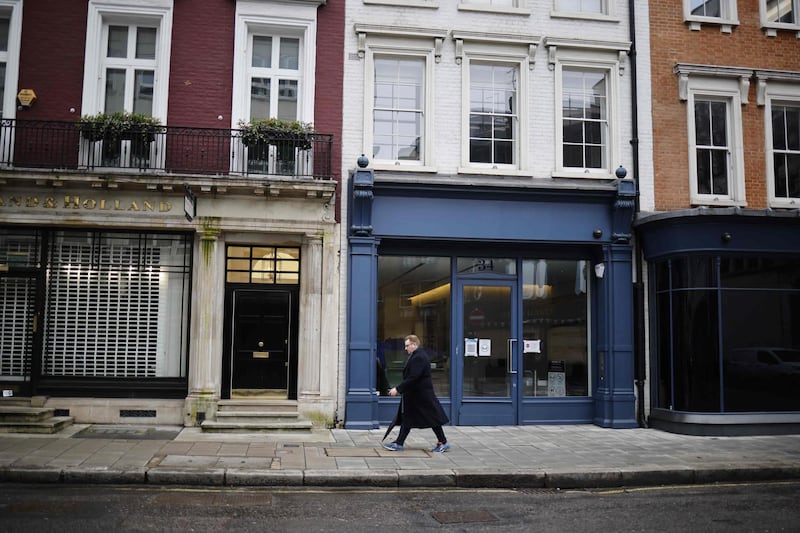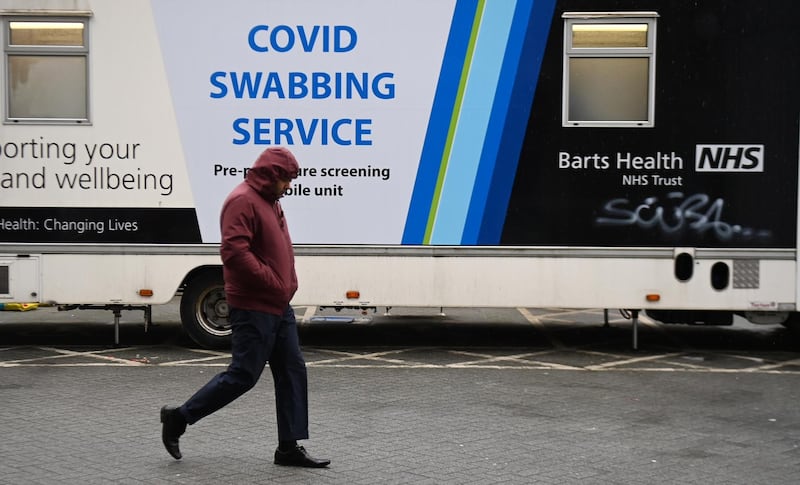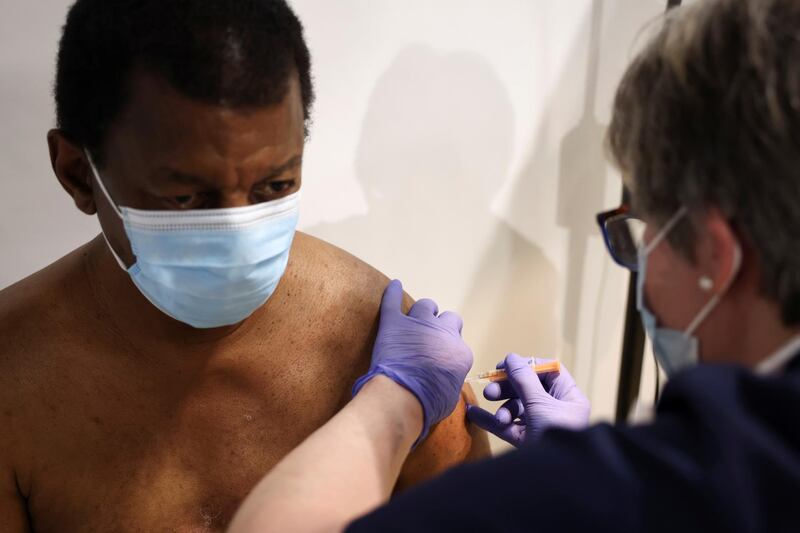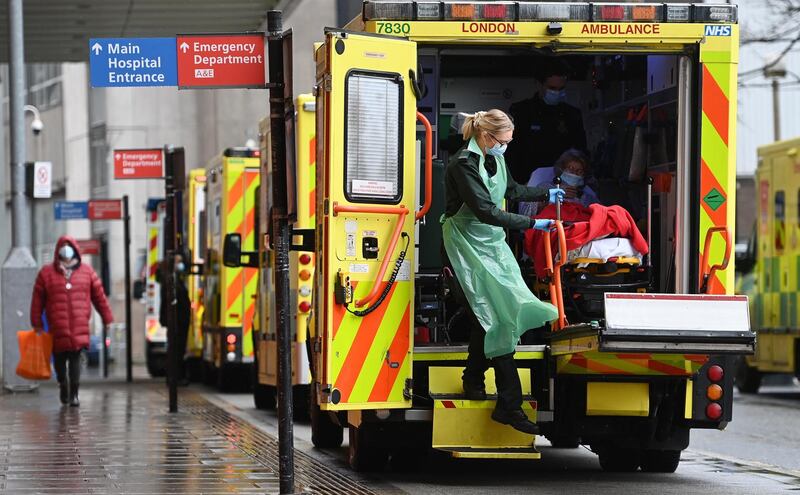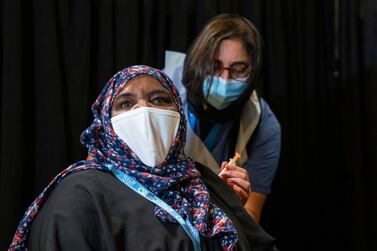Coronavirus infection rates have fallen across the UK, the latest figures from the Office for National Statistics show.
About one in 115 people in private households in England had coronavirus between February 6 and 12, according to new estimates from the ONS. That is down from about one in 80 people in the week to February 6 and is the lowest figure since November 29 to December 5, when the estimate also stood at one in 115.
In Wales, about one in 125 people are estimated to have had Covid-19 in the week to February 12, down from the previous ONS estimate of one in 85 for the previous seven days, while in Northern Ireland, about one in 105 people had Covid-19 in the same period, down from one in 75.
Vaccines appear to be playing a part in reducing coronavirus transmission by up to two-thirds, according to earlier “real world” data handed to the British government.
Prime Minister Boris Johnson will consider the data showing the effects of one dose of either the Oxford/AstraZeneca or Pfizer/BioNTech vaccines as he finalises a route out of lockdown next Monday.
Other statistics show that coronavirus cases are falling most rapidly among the elderly, who were prioritised for vaccines, with care-home outbreaks halving in a week.
The Telegraph quoted government sources as saying that the Public Health England data – which is not yet publicly available – was "very encouraging".
Prof Neil Ferguson, a key scientific adviser to the government, said the two-thirds drop in transmission was “not too far off” the modelling he has seen.
"There are two factors we have to look at: one is how quickly our infection levels are declining, in particular how quickly hospitalisations and deaths are declining. The second is the picture of the real world effectiveness of vaccines," he told BBC's Radio 4 Today programme on Friday.
“They are both looking promising at the moment.”
Prof Adam Finn from the University of Bristol said “everything is moving in the right direction”.
“We’ve got to the point in our study in Bristol to say it’s definitely having an effect – it’s just hard to put an exact number on it at the moment,” he said.
“It’s becoming clear for the Pfizer vaccine, which we’ve been using for a month longer, and it will take slightly longer for the Oxford vaccine to come through, but they are definitely doing the job.”
More than 16.4 million people have been given a first dose of the vaccine, with about 573,000 given a second dose, according to government data.
Scientists reported on Thursday that England's third national lockdown had cut coronavirus cases by two thirds but stressed that restrictions should be lifted cautiously because the effect of vaccines were still unclear.
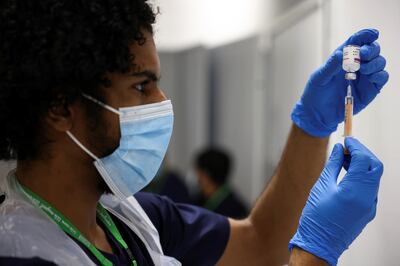
Foreign Office minister James Cleverly said the government wanted the current lockdown to be the last but he could not rule out another if case numbers surge.
“Ultimately no one can predict with complete certainty what the vaccine will do and how it will evolve,” he told Sky News.
“We very, very much hope that this is the last lockdown [but] we can’t give complete 100 per cent certainty because viruses don’t work like that.”
Mr Johnson pledged to be driven by "data and not dates" as he plans the country's lockdown exit strategy.
Meanwhile, scientists reacted with confusion to reports suggesting the government is preparing to slash the size of its contact tracing workforce.
Contact tracing workforce to be slashed
Test-and-trace staff were told that their numbers would be slashed “as a result of the decreasing levels of prevalence” of Covid-19 across the country, Sky News reported.
The directive followed an email earlier in the week that some contact tracers would have their shifts reduced by 10 per cent.
Dr Simon Clarke from the University of Reading said the timing of the move was odd given that the easing of restrictions would put “upward pressure” on cases.
As the UK looks to the next stage of its pandemic fight, age appears to be firming as the dominant factor in deciding vaccine priority.
Prof Wei Shen Lim, chairman of the joint committee on vaccination and immunisation, said more lives would be saved by targeting age groups than by any other factor.
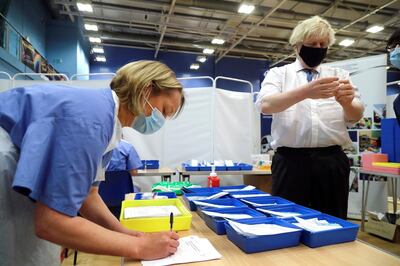
Key workers such as teachers and police officers had been mooted as the next groups that should receive vaccines.
But if officials decide to keep prioritising vaccines based on age, over-40s could begin receiving their vaccines by late March.
Prof Lim said the overall speed of the vaccine drive should be the biggest concern.
"One of the great successes of the programme is the rate of deployment, and this is now the most important factor in the programme,” he told doctors at an online forum on Thursday.
"Age dominates by a long way, and almost all the underlying health conditions contribute some increased risk, but not a huge amount of increased risk."

